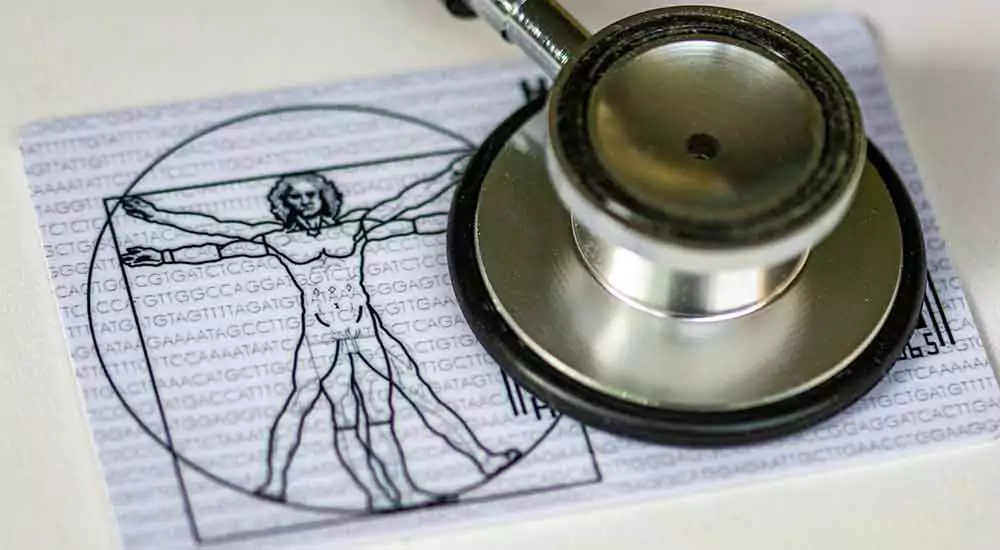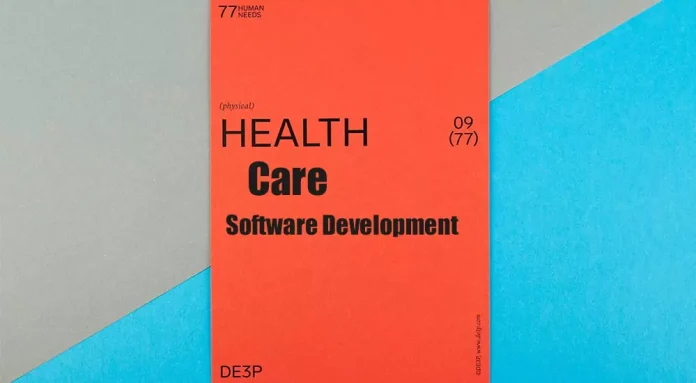There is a digital transformation in the healthcare industry. Hospitals and health systems are updating their legacy infrastructure and processes to enhance the quality of care, patient outcomes, clinician workflows, operational efficiency, and financial outcomes. This is being powered by the advances in healthcare software development and information technology, changing payment models that reward value-based care, increased patient demands for convenience and transparency, and new entrants from nontraditional technology companies.
A New Era for Healthcare Software Development
Healthcare organizations are spending substantially on healthcare IT (HIT) to move from the old, fragmented systems to the contemporary, integrated systems. In 2022, HIT investments were more than $291.7 billion worldwide, and they are expected to increase to $536.8 billion by 2026. Software lies at the heart of this infrastructure re-engineering. Interoperable cloud-based solutions are replacing client-server software in all the clinical, financial, and operational domains. Open APIs make it easier to integrate new applications with the existing hospital IT environments. Artificial intelligence and automation are being incorporated into workflows. There is a focus on enterprise-wide healthcare software development solutions that share data without any interruptions across the care continuum.
6. EHR Optimization and Upgrades – Healthcare Software Development
A top priority is enhancing electronic health record (EHR) systems with the latest functionalities. EHR usage has grown from 9% of US hospitals in 2008 to 96% in 2021. But many implementations are first-generation systems that lack capabilities to support value-based reimbursement or patient engagement initiatives. Hospitals are still running legacy EHRs from Meditech or Cerner, installed 15-20 years ago. These systems contribute to clinician burnout with poor UX, fragmented workflows, and excessive clicking. EHR optimization projects are adding advanced CDS, analytics, telehealth, patient portal integration, and revamping UI/UX for a better experience.
5. Revenue Cycle Management Transformation
Another major legacy area getting upgraded is RCM software. Inefficient billing and collection processes lead to substantial revenue leakage and cash flow issues for hospitals. New RCM analytics leverage AI to find sources of lost revenue. End-to-end RCM platforms improve everything from patient access to claims management with automation. Integrated credit card on file and payment plan solutions provide a modern, retail-like patient financial experience. RCM analytics also feed into value-based contracts to better understand the cost and quality of services across populations.
4. Precision Medicine and Big Data Analytics
Precision medicine and big data analytics are future capabilities that are being baked into the hospital IT stacks. Predictive algorithms on clinical and claims data find at-risk patients for proactive care management. IoT devices, wearables, and remote patient monitoring data interoperability drive into real-time analytics. Combination of genomic tumor sequencing with AI-based diagnostic software enables oncologists to bring specific cancer therapies into focus. The world healthcare analytics market as a whole will be a $57.16 billion market in 2025. The essential IT modernization to combine networks, storage, and servers is essential in controlling the overwhelming flood of structured and unstructured data coming in from the care continuum.
Check Also: Live Healthier
3. Cloud Computing and Platformization
The cloud is enabling the platformization of healthcare. Industry leaders like AWS, Google Cloud, and Microsoft Azure now offer specific solutions for common healthcare workloads like EHRs, c, imaging, IoT, genomics, and analytics. Benefits include lower TCO, faster deployment, easier scaling, and reduced IT infrastructure management. Cloud also facilitates ecosystem connectivity through APIs and microservices architectures. Healthcare application vendors are moving their solutions to cloud-native platforms with open API layers to encourage collaboration. Cloud-based EHR, RCM, supply chain, and patient engagement platform vendors like Olive, Talkdesk, Syft, and PatientPop take an API-first approach to integrate with existing hospital IT environments.
2. Interoperability and Data Exchange
Lack of systems interoperability has been a huge obstacle to digitizing healthcare. Hospital departments often operate in data silos, unable to share information fluidly across platforms. Both federal mandates and private sector initiatives are tackling this problem. ONC’s recent interoperability rules require EHR vendors to provide patient access and data exchange APIs, enabling health data to follow a patient across care settings. Non-profit collaborations like CommonWell and Carequality facilitate cross-network data sharing between participating providers and EHR vendors. The Da Vinci Project groups payers, EHR vendors, and providers to define API standards for use cases like risk adjustment and quality reporting. The goal is an industry-wide interoperability framework.
1. Unified IT Infrastructure and Support
Under the scenes, healthcare CIOs are transforming their infrastructure and support services to support their digital transformation goals. Data center colocation, hyperconverged infrastructure, and SDDC solutions unify disparate systems into less complicated environments to manage. Network upgrades shift from obsolete MPLS circuits to software-defined wide area networks that dynamically route traffic across a public or private framework. Support services are moving away from the traditional break-fix models to cloud-based automation, predictive analytics, and XaaS. Such modern IT foundations offer the performance, agility, resilience, and TCO improvements required to bring innovations at scale.
How Innovations Are Improving Care Delivery

This healthcare IT modernization is driving tangible improvements in patient outcomes and experience, clinician experience, operations, and financials. Here are some top examples:
6. Transitioning to Value-Based Care Models
Upgraded IT systems allow hospitals to take on more value-based contracts that tie reimbursements to cost and quality metrics. Interoperability, advanced analytics, and real-time data exchange help providers better coordinate care and manage populations under new at-risk payment models. Precision medicine and personalized care plans also prevent conditions from escalating into costly interventions.
5. Optimizing Workflows and Clinical Decision Support
New EHR functionalities reduce administrative tasks and enable clinicians to work at the top of their license. Patient charting, care coordination, CPOE, and prescription ordering are streamlined through workflow automation, smart templates, and AI assistance. Real-time clinical decision support surfaces relevant patient information and treatment guidelines directly into workflows. Analytics measure areas needing optimization. Clinicians can spend more face time with patients instead of on paperwork.
4. Enhancing Patient Experience
Patient engagement platforms update consumer experience with the help of such conveniences as self-service online booking, virtual visits, remote monitoring programs, and patient portal access to records. Chatbots take care of ordinary administrative requests and triage needs. Hospital amenities, education, and entertainment are brought to the bedside by digital front door solutions such as MyChart Bedside. Post-discharge remote monitoring ensures a safe discharge of patients back home. Technology shifts the focus from episodic sick care to continuous health.
3. Improving Access and Convenience
Interoperability and data exchange between hospitals, clinics, pharmacies, labs, and patients enable care continuity and convenience. A patient’s medical history, test results, care plans, prescriptions, and more seamlessly flow across providers and care settings. Patients engage in their health through portal transparency rather than filling out redundant paper forms at every visit. Shared care plan collaboration with embedded chat features connects the care team. Telehealth virtual visits make care more accessible and convenient from anywhere, important in rural areas with provider shortages.
2. Operational and Financial Performance
Digitization delivers operational efficiencies that help health systems’ financial bottom line. Administrative workflows are automated to reduce overhead costs. Supply chain analytics minimizes waste and expired inventory. Clinical documentation improvement reduces rejected claims. RCM analytics finds revenue leakage. Patient throughput and asset utilization are optimized with workflow digitization. Prescriptive analytics guides cost reduction and care variation reduction initiatives. EHR-agnostic healthcare analytics platforms like Densify and Kyruus Insights surface optimization opportunities across the enterprise.
1. Patient Safety and Outcomes through Healthcare Software Development
Eventually, the modernization of healthcare IT intends to avoid medical errors and enhance the outcomes of patients. EHR CDS alerts intercept adverse drug events. AI algorithms recognize patients who are at risk of sepsis or a heart attack early for intervention. Precision medicine ensures that adverse reactions are avoided since treatments are aligned with genomic profiles. Real-time patient monitoring enables earlier detection of deterioration to reduce ICU transfers. Robotics and navigation assistance enable greater surgical precision. And post-acute remote monitoring facilitates safe transitions home to reduce readmissions.
Overcoming Barriers to Modernization

While healthcare software innovation offers much promise, barriers exist that can deter adoption. Here are some top challenges and how leading health systems are overcoming them:
6. High Costs and Tight Margins of Healthcare Software Development
Broke hospitals have difficulty financing big capital projects even if they offer ROI. Making incremental changes rather than replacing systems wholesale can have a lessening effect on the balance sheet while still attaining major evolution. Cloud financing models such as subscriptions and pay-as-you-go billing also help to lighten the pressure on the project’s cash flow. Today’s healthcare IT vendors even have value-based pricing that is based on actual cost savings or performance objectives instead of large initial license payments.
5. Disruption to Clinical Workflows
Many physicians view new technologies as hindering rather than helping their jobs. Their days are already packed with seeing patients and updating EHRs. Learning new software that changes existing workflows can impact productivity and job satisfaction. Getting clinician buy-in is essential. Leading rollouts focus first on automating burdensome administrative tasks before altering clinical workflows. On-site training and support help providers adopt new processes. Analytics quantify efficiencies gained to demonstrate benefits.
4. Integration Challenges and Interoperability Gaps
Getting new systems to connect with existing hospital IT environments loaded with legacy systems is difficult. But hospitals can’t rip and replace everything at once. New interoperability standards and cloud-based integration platforms help bridge gaps. Using APIs, microservices, and iPaaS solutions, hospitals can connect islands of data trapped in legacy systems to modern platforms and each other. New departmental solutions can overlay rather than displace existing foundations.
3. Cybersecurity and Compliance Risks
The more connections and data, the greater the vulnerability without adequate precautions. Medical equipment such as pacemakers and imaging equipment, which was long off the network, is now IoT-enabled, opening up the possibility of attack vectors. Cybersecurity should also penetrate healthcare, as the latter is permeated by software. First, put robust network security and access controls in place before adding new technologies. Upgrade legacy systems, which are behind on security patches. Perform penetration testing on the addition of devices or third parties. Keep vigilance – this is what patient safety is about.
2. Lack of IT Staff and Expertise in Healthcare Software Development
Healthcare provider IT departments are perennially understaffed. Major modernization initiatives require expertise that in-house teams lack after years of maintaining the status quo infrastructure. Seek third-party services support from IT infrastructure vendors and MSPs to supplement gaps. Cloud and XaaS models also reduce the administrative burden on IT. Have candid conversations about current team capabilities and where help is needed, rather than attempting digital transformation solely in-house.
1. The Future of Healthcare Software Development
Although the path towards modernization has obstacles, the way forward is clear. Following the drive towards value-based care, the desire to enhance margins, patients’ desire to enjoy a better experience, and technology advancements, change will be driven. EHRs will become more and more important in care delivery and coordination. Interoperability will dissolve data silos. The cloud will eliminate friction from software innovation. The shift in healthcare will be from a “sick system” to a system of continuous care, which is propelled by technology. The COVID-19 pandemic and the growth of telehealth have just sped up the process of digital health adoption among incumbents and startups.
Entirely new healthcare IT categories will emerge around whole-person care. In 2028, the healthcare wearables market is projected to almost double from 2022. Platforms for remote monitoring of patients are integrating with EHRs and care coordination software to ensure continuous outpatient monitoring. Amazon Alexa and Google Home’s voice technology is making its way into the patients’ rooms to help both families and nurses. Five years from now, the healthcare technology landscape will look radically different from what it does today.
Closing Statement:

By modernizing legacy hospital IT infrastructure and software platforms, healthcare leaders can map a way to increased quality, efficiency, and financial performance despite industry challenges. Focusing on clinician experience, patient convenience, and data interoperability sets up innovation for operations, care delivery, and business models. Working with the internal and external IT specialists contributes to success. By focused efforts, healthcare organizations can innovate themselves to create a more sustainable future.





